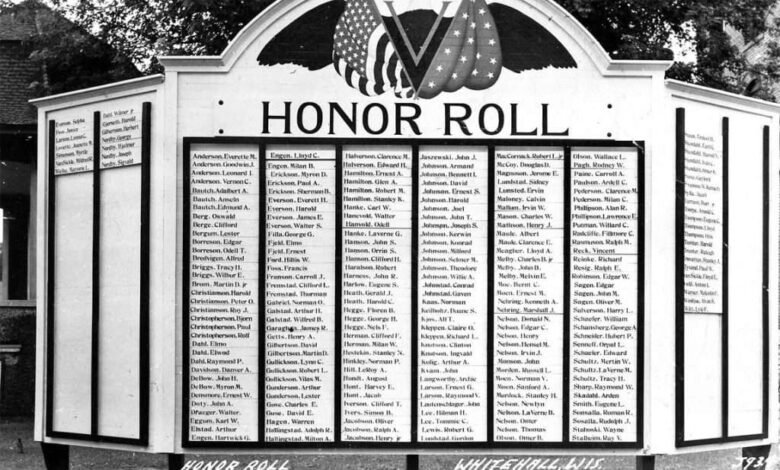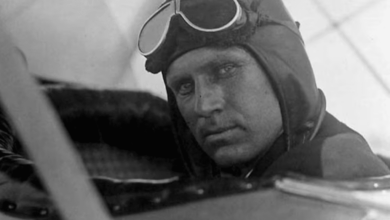World War Two Rural Honor Rolls


 On September 1, 1939, Germany invaded Poland, with Great Britain and France declaring war on Germany on September 3rd. Italy declared war on Great Britain and France on June 10, 1940. Germany invaded the Soviet Union on June 22, 1941 and Japan had occupied all of what was then known as French Indochina by July 26, 1941. On December 7, 1941, Japan launched an attack on our US fleet at Pearl Harbor, Hawaii – “a day that will live in infamy.”
On September 1, 1939, Germany invaded Poland, with Great Britain and France declaring war on Germany on September 3rd. Italy declared war on Great Britain and France on June 10, 1940. Germany invaded the Soviet Union on June 22, 1941 and Japan had occupied all of what was then known as French Indochina by July 26, 1941. On December 7, 1941, Japan launched an attack on our US fleet at Pearl Harbor, Hawaii – “a day that will live in infamy.”
President Franklin Delano Roosevelt declared war on Japan on December 8, 1941.
Americans were called to duty by the draft board of the Selective Service System, which had been created in May 1917 after the US Army failed to meet a goal of expanding to one million men shortly after the US declared war on Germany beginning America’s involvement in the First World War.
By the time the Second World War ended in 1945, 50 million men aged 18 to 45 had registered for the draft and about 10 million of those were serving in the military. About six million men and women volunteered to serve (many to avoid being a draftee) and another 3.5 million civilian men and women worked as federal employees during the war. Over 10 million Americans were civil defense volunteers.
During four years of worldwide war 300,000 Americans were killed. Forty-one young men and one woman served in the military from my rural town of Edinburg in Saratoga County, NY. Two lost their lives, killed in action: George Ferguson and Leonard Tryon.

 During the World War One it became a custom in this country for families of servicemen to hang a banner, a “service flag,” in a window of their homes which had a star for each family member serving in the armed forces. A blue star represented living service members and a gold star represented those who had lost their lives.
During the World War One it became a custom in this country for families of servicemen to hang a banner, a “service flag,” in a window of their homes which had a star for each family member serving in the armed forces. A blue star represented living service members and a gold star represented those who had lost their lives.
I well remember as a child seeing one of these gold star banners in the window of our neighbor, Rhoba Stockwell Ferguson Robinson. Rhoba was the mother of George Ferguson, who had joined the army in 1943 at the age of 21 and was killed in action in January 1945. Rhoba was a hard worker – widowed twice – spending hours each day sewing gloves to add to the income from her small farm.
Rhoba Ferguson Robinson was a Gold Star mother, often riding in the Decoration Day – now called Memorial Day – and the July 4th parades in Northville.
After the war ended – on September 2, 1945 the Japanese signed the formal surrender document in Tokyo Bay onboard the battleship USS Missouri – many small towns across America erected Honor Rolls – typically in the center of town – listing all the residents who had served.
Edinburg was no exception, erected by Northville Central School’s shop class, the Edinburg Honor Roll was made of wood. At some point it was taken down and stored in the old “highway barn.”
The barn was utilized by the Highway Department until 1975 and then served as a storage facility until 1992 when it was leased the Edinburg Historical Society and renamed the Rural Museum. It’s located just up the hill from the Nellie Tyrrell Museum, known a “The Nellie.”
In 1991, when the barn was being cleaned out in preparation for the museum, the Honor Roll was re-discovered. Local resident and museum volunteer Fred Trudy gave it a face lift and it was hung in The Nellie.
A few years ago, it was learned that two more names needed to be added. The Historical Society asked sign-maker George Bailey of Edinburg to make a new sign. He donated his time and materials and created a new Honor Roll, now proudly on display at The Nellie.
Priscilla Edwards has served as Edinburg’s town historian since 1986. For over thirty years she has written monthly articles for the town newsletter, which have recently been published in a book, My Mountains, My People (2023). She was also a co-recipient of the Saratoga County History Center’s 2024 Public History Award.
John Warren contributed to this essay.
This essay is presented by the Saratoga County History Roundtable and the Saratoga County History Center. Follow them on Twitter and Facebook.
Illustrations, from above: Whitehall, Wisconsin’s WWII honor roll; and a World War Gold Star Banner showing three men in the service, including one who lost their life.




